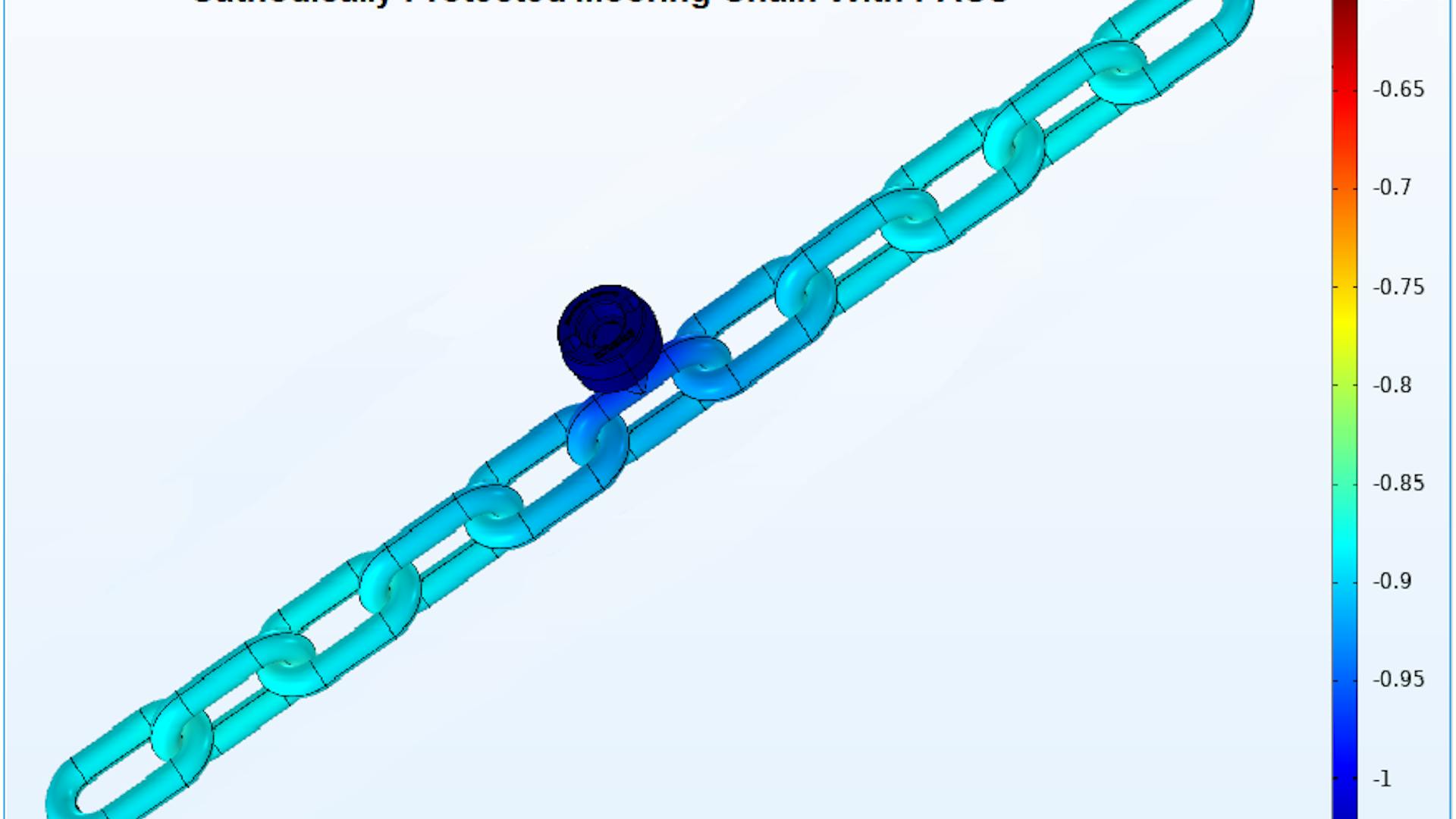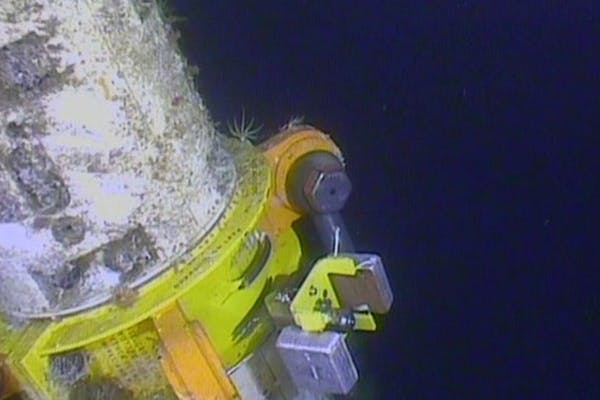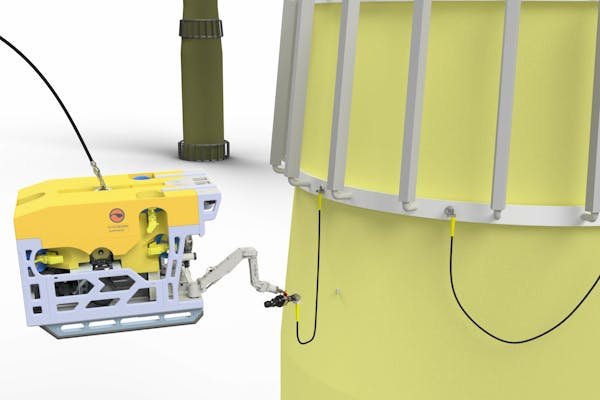Deep water mooring systems for an FPSO, or similar floating structures are exposed to corrosion from the day they are installed, and corrosion has been the primary reason for expensive pre-emptive replacements of mooring systems on several fields around the globe.
Imenco has developed methods and equipment for in-situ installation of Cathodic Protection of Mooring Systems & Mooring Lines from anchors to fairleads on the vessel.
Spelter Socket: Transition piece between Chain Section and Wire/Rope Section

Deep water mooring systems will normally have a section made from sheathed steel wire or composite rope with a spelter socket as the transition between the chain and the rope/wire. Mooring design codes require these sockets to be protected against corrosion through a combination of coating and sacrificial anodes. We observe however that the anode mounted to these components very often are rapidly consumed.
In the video below one can see a transition piece where the original sacrificial anode is completely depleted. An anode bracket with 2 x 20 kg of Al-anodes was attached using a Piranha X expanding Earthing Connection Clamp in an existing pad-eye.
Imenco have delivered more than 150 clamps for this application.
Mooring Chain

The corrosion of mooring chains for permanently moored offshore structures has long been a recognized challenge. This is particularly acute within the Oil & Gas industry, where corrosion of the chain is a leading cause of mooring failures and pre-emptive replacement of these systems in Floating Production, Storage and Offloading units.
As floating offshore installations increase in number across other industries, this issue will present itself across the board, impacting the integrity of all systems. Imenco’s PacuTM system is designed to protect mooring chain.
More details
Contact


















